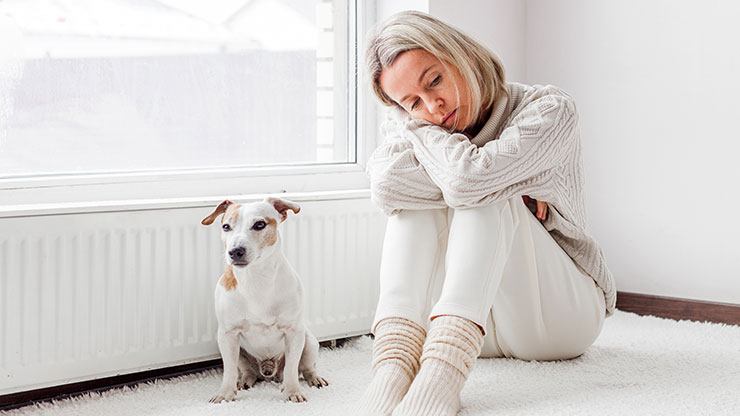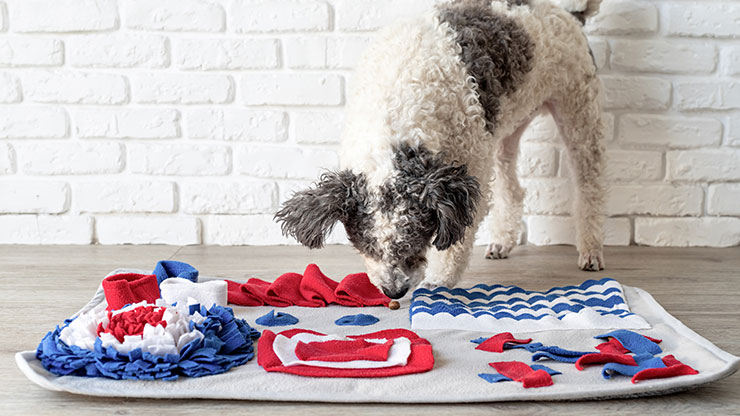
Signs of A Stressed Dog And How To Reduce It
Dogs are generally cheerful animals. However, they experience stress just like humans. Stress in dogs can be caused by various things such as loud noises, fear, loneliness, visiting new places, or meeting new people. A person can usually understand how their dog feels by making a note of the dog’s body language they use to communicate. Therefore, it can be helpful to understand how our dogs communicate and what they are trying to say. As a dog owner, you must understand the signs of a stressed dog. If you know why your dog is stressed, you can help calm them! In this article, we will talk about the five clear signs of a stressed dog and ways to reduce their stress.
Excessive Panting
Dogs usually pant to regulate their body temperature, especially in warmer weather or after physical activity. However, it may be a concern when your dog starts panting excessively without an apparent cause, such as heat or exercise. Stress triggers this excessive panting response in dogs. Panting can indicate that your dog feels nervous, fearful, or anxious about something in their environment or situation. When your dog is stressed, it increases the heart and breathing rates, which can be observed as panting.
Drooling
Another sign of stress in dogs is drooling excessively. Various medical conditions, such as dental problems, nausea, or poisoning, can cause drooling. But it can also be a result of stress or anxiety. Some dogs may drool more when exposed to something that scares or worries them, such as loud noises, strangers, or other dogs. Also, dogs sleep with their tongue out and drool when stressed.
If your pup is creating pools of drool where they rest or walk, it's time to pay attention. Excessive drooling can be an early indicator of their emotional state, and addressing their stress is essential for their overall well-being.
Increased Aggression and Destructive Behavior
Stress can also make your dog more aggressive and destructive. Imagine your usually calm and well-behaved dog suddenly displaying aggression or engaging in destructive behaviors. Aggression is one of the common dog behavior problems that can be directed toward other animals, people, or objects. Your dog may growl, snap, bite, or chase anything that triggers their stress response. Destructive behavior can include chewing, scratching, digging, or tearing up things in your home or yard. Your dog may do this to release frustration, boredom, or anxiety or to cope with separation.

Starts to Avoid You
If your dog is stressed, they may avoid you or other people they normally love. They may hide under furniture, in a corner, or in their crate. They may also show signs of depression, such as loss of appetite, lethargy, or lack of interest in play. Your dog may avoid you because they feel overwhelmed, insecure, or fearful. They may also sense your stress and try to distance themselves from it. However, it's vital to understand that avoidance behavior can be a coping mechanism for a stressed dog. They may seek solitude to escape what they perceive as overwhelming situations. It's a way for them to regain control over their environment.
Loses Interest in Play and Food
One of a dog's most obvious signs of stress is losing interest in play and food. Play and food are two of dogs' most rewarding and enjoyable things. They stimulate their senses, provide mental and physical exercise, and strengthen their bond with us. If your dog is stressed, they may lose motivation and enthusiasm for these activities. They may ignore their toys, refuse treats, or turn away from your invitations to play. It indicates that your dog is feeling unhappy, unwell, or anxious.

How Can You Reduce the Stress of Your Dog
If you notice any of these signs of stress in your dog, try to find the cause and eliminate it if possible. For example, if loud noises stress your dog, you can provide them a quiet and comfortable place to relax. If strangers or other dogs stress your dog, you can avoid crowded or unfamiliar places and introduce them gradually and positively to new people and animals. Take care of your dog at home to reduce it’s stress. You can also help your dog cope with stress by giving them regular exercise, mental stimulation, and social interaction.
Exercise can help your dog burn off excess energy and release endorphins that make them feel good. Mental stimulation can keep your dog’s mind busy and prevent boredom and frustration. Social interaction can help your dog feel loved and secure. Moreover, you can give your dogs something good and healthy to eat and drink, such as oat milk. But can dogs drink oat milk? The answer is yes. Oat milk is an excellent drink for dogs that adds nutrition to their diet and helps to keep them healthy. A healthy dog is very unlikely to feel stress.
You can also use alternative therapies to reduce your dog’s stress, such as massage, aromatherapy, music therapy, or calming supplements. These therapies can help your dog relax and calm down by soothing their senses and nervous system. Finally, consider taking your dog for regular vet checkups to keep your dog healthy and happy. Vet visits can also be stressful for your dogs sometimes. Choose a reliable veterinarian to make vet visits less stressful for your dog.
Conclusion
Stress is a common problem for dogs that can affect their health and happiness. By recognizing the signs of stress in dogs and helping them cope, you can improve their quality of life and strengthen your bond. Remember, a stress-free dog is joyful, and as responsible pet owners, their well-being is our ultimate reward.
-----
Author Bio
Natalia Michelle is a devoted pet owner and competent writer of The Fit Pets. She brings the world of animal companions to life via intriguing words, with a heart full of love for dogs and a nomadic spirit. Natalia not only shines in her job as a writer but also flourishes in pet care and companionship.










